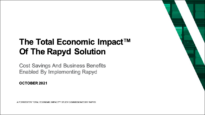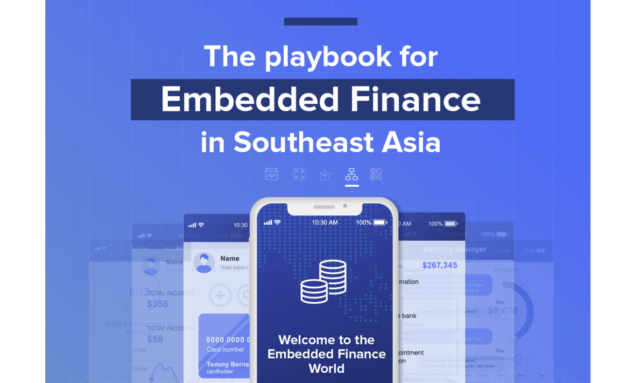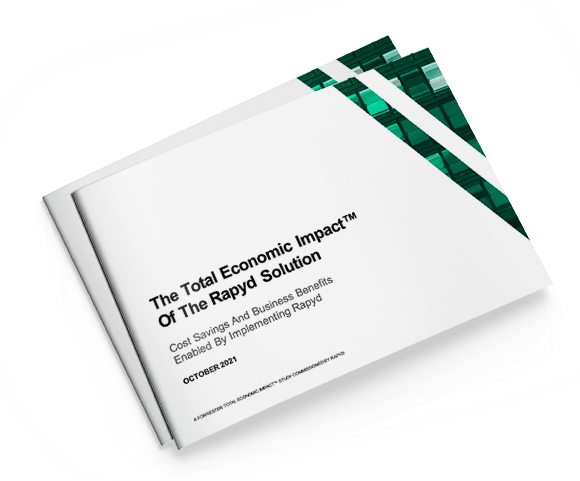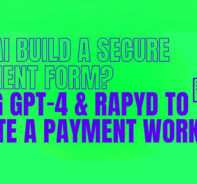What embedded finance is, how it is taking off in Southeast Asia, and how your company can offer it successfully.
Table of Contents
- What embedded finance is, how it is taking off in Southeast Asia, and how your company can offer it successfully.
- Leaders in Embedded Finance in Southeast Asia
- The Opportunities and Challenges Facing Embedded Finance in Southeast Asia
- The Arrival of Fintech-as-a-Service (FaaS)
- The Total Economic Impact of the Rapyd Solution
- How to Choose the Right Fintech-as-a-Service (FaaS) Provider
- The Future of Embedded Finance
- Want to understand how embedded finance can work for you? Download our infographic to see how companies in Southeast Asia are finding success – and how you can too.
- Put Fintech as a Service to Work for You.
Embedded finance is the process by which financial services are built into non-financial applications or platforms.
Embedded finance enables companies to create a seamless user experience within a single platform and offers new products and services that benefit users and increase revenue. It also can be a key monetization lever for businesses, help to foster a stronger relationship between companies and customers and increase user retention.
Leaders in Embedded Finance in Southeast Asia
One example of a company doing embedded finance right is the Singapore-based gig-economy platform Grab. The company began as a ride-hailing service, then began offering food delivery services. The app also provides embedded services such as payments, insurance, investments, loans and credit. This app structure enables users to buy and access financial products while staying within Grab’s ecosystem.
Want to understand how embedded finance can work for you? Download our infographic to see how companies in Southeast Asia are finding success – and how you can too.
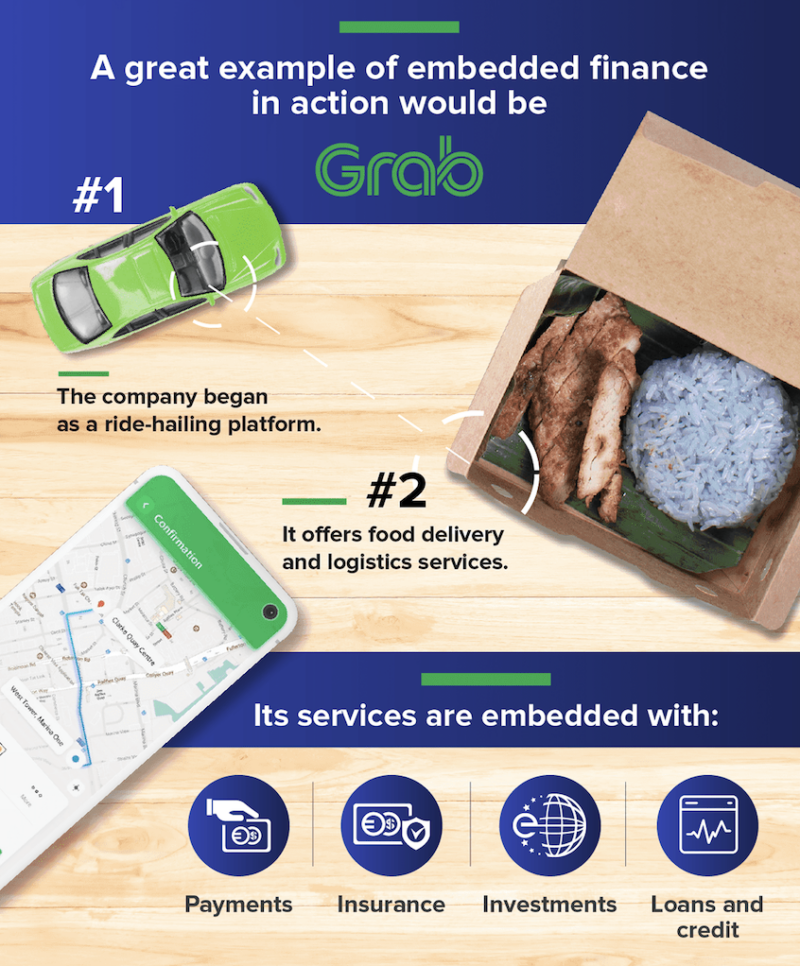
However, there are many other examples of firms succeeding with embedded finance in Southeast Asia, including Gojek, Shopee, Lazada, Xero, Aspire, Spenmo, Neat, Osome, and Lyte.
Companies looking for other potential ways to embedded finance should also consider what’s happening in different industry verticals:
- Edtech: In Edtech, embedded finance is used for tuition payments and student loans.
- Ecommerce: Embedding in ecommerce means offering integrated digital wallets, installments, cashback rewards, and supplier financing.
- Healthtech and healthcare: In healthcare, this strategy is used for loans, installment plans, and insurance.
- Proptech: Within real estate, companies can embed loans, home insurance, agent wallets into existing platforms.
- Enterprise Solutions: For enterprise, businesses use embedded finance to offer banking services, company expense cards, business loans, and integrated payroll solutions.
The Opportunities and Challenges Facing Embedded Finance in Southeast Asia
While there are seemingly unlimited opportunities for embedded finance to take off in Southeast Asia, there are some challenges as well. For one, the region has a large unbanked population of 290 million people, many of whom do not have access to financial services and loans from legitimate institutions. Southeast Asia is also a complex region made up of different countries, each with its own set of rules and regulations. Income per capita in Southeast Asia is modest, so businesses need to keep costs down and ensure affordable services.
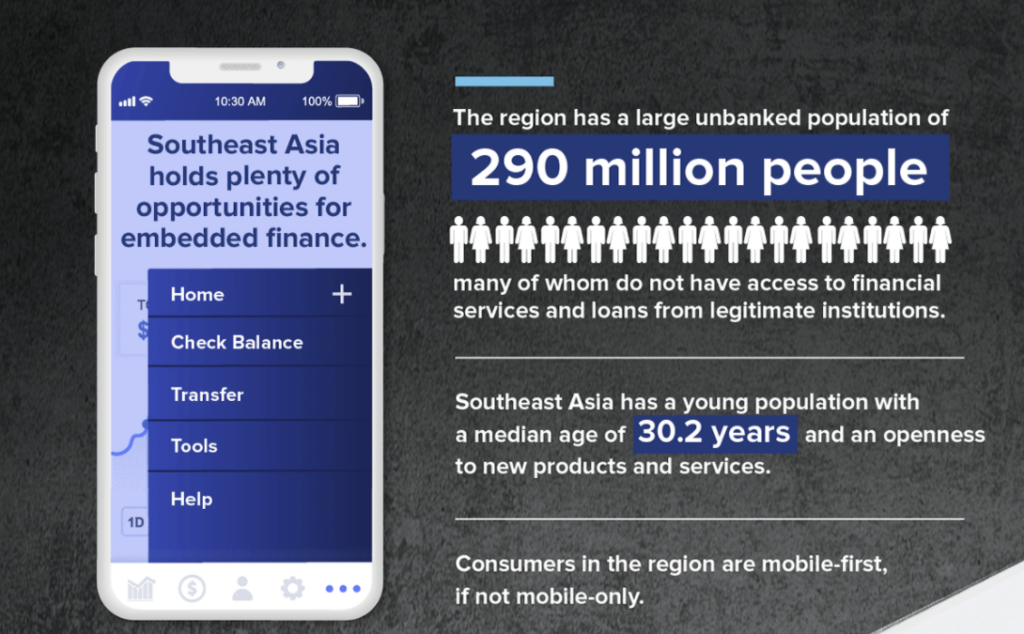
Building a fintech product requires a lot of time, money, and effort. And while it can be challenging for businesses to embed financial services into their platforms, there is an immense potential as well. For one, Southeast Asia has a young population with a median age of just 30 and an openness to new products and services. Additionally, consumers in the region are mobile-first, if not mobile-only, and primed to look to trusted brands and apps for additional services.
Joel Yarbrough, Vice President of Asia Pacific at Rapyd, puts it this way, “People in ASEAN and South Asia look at themselves as early adopters of, eagerly looking for a better way to do things.” Because of this, those companies able to move to the forefront of embedded finance have the potential to become the region’s next Grab.
The Arrival of Fintech-as-a-Service (FaaS)
Fintech-as-service (Faas) provides the infrastructure for companies to develop their own financial services – without building the foundation from scratch.
Much like how on-demand cloud computing services got rid of the need for businesses to invest in services and related infrastructure, FaaS aims to do the same by democratizing the ability to develop financial products by offering these solutions ‘as a service.’ FaaS aims to address all the steps involved in building a financial product, providing end-to-end solutions for companies.
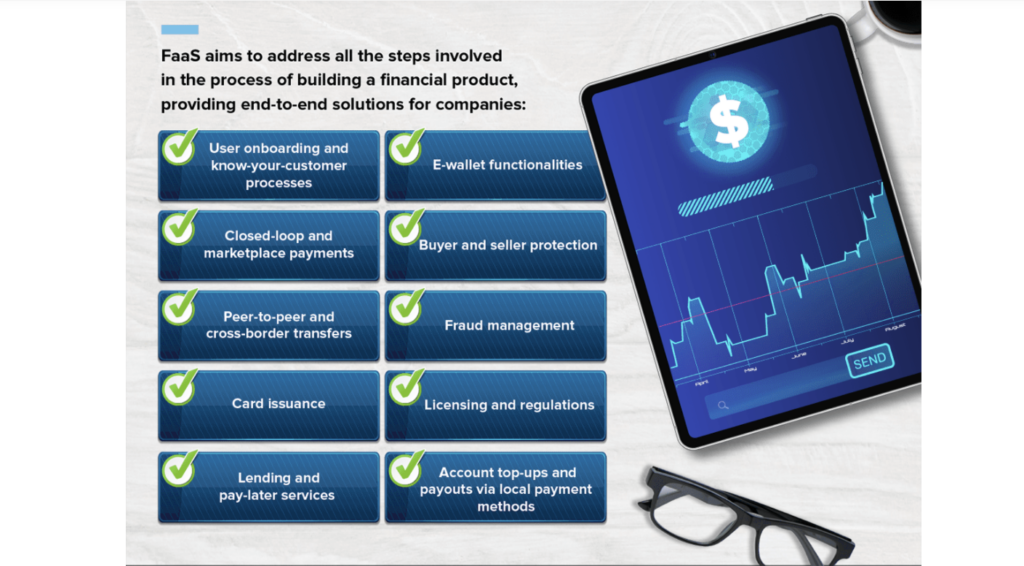
These solutions commonly include:
- User onboarding and know-your-customer processes
- E-Wallet functionalities
- Closed-loop and marketplace payments
- Peer-to-peer and cross-border transfers
- Fraud management
- Buyer and seller protection
- Lending and pay-later services
- Account top-ups and payouts via local payment methods
How to Choose the Right Fintech-as-a-Service (FaaS) Provider
There are many FaaS providers out in the market that address different aspects of the embedded finance process. Here are some key questions to ask yourself before choosing a FaaS provider:
- Do they offer the features you need for what you want to build?
- Do they cover the markets you want to operate in?
- Are they appropriately licensed to support what you want to do?
- Are their processes and documentation easy to understand and integrate into your own systems?
- Do they offer the features you need for what you want to build?
By knowing what your FaaS provider can (and cannot) offer, you’ll have a clear understanding of what’s possible for your company, and how FaaS can become a part of your business’s long-term growth strategy in Southeast Asia, APAC, and beyond.
The Future of Embedded Finance
These are still early days for embedded finance in Southeast Asia. How people understand and use financial services is already beginning to evolve – and will only continue to transform. While not within its challenges, the overall future of embedded finance is bright. Joel Yarbrough, Vice President of Asia Pacific at Rapyd, sees it this way, “Finance in this diverse region will be driven by digital natives who care deeply about the needs of their communities.” Now companies must begin to do the same with comprehensive, embedded, financial solutions for all.
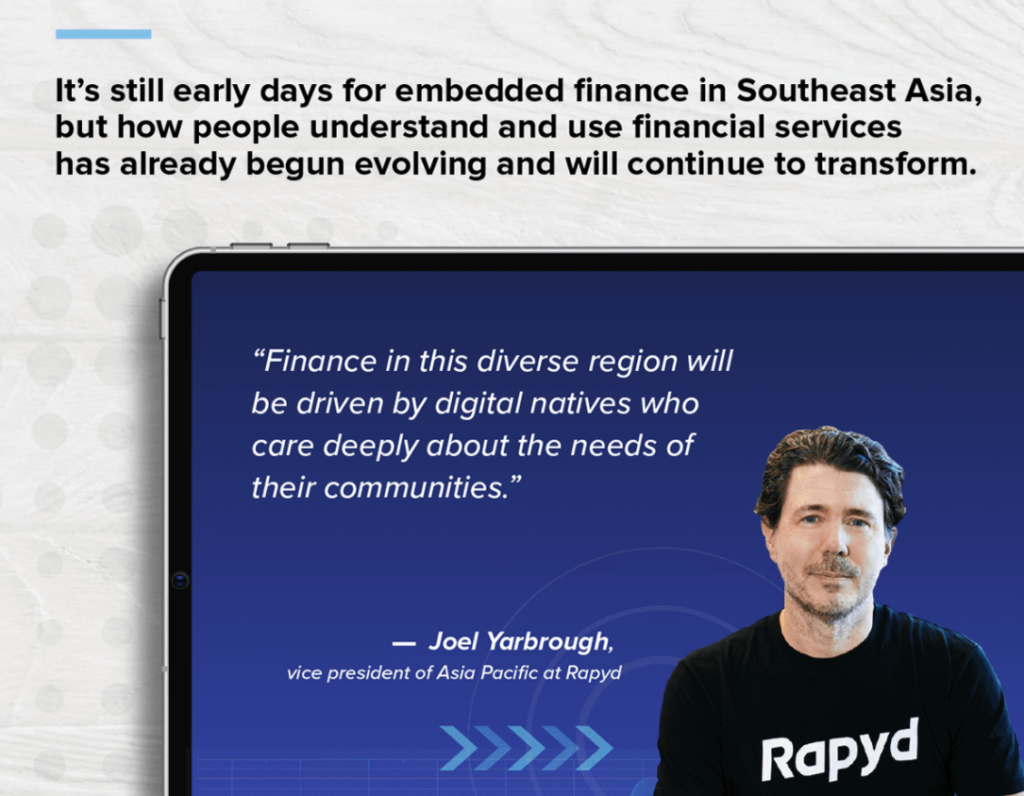
Want to understand how embedded finance can work for you? Download our infographic to see how companies in Southeast Asia are finding success – and how you can too.
Put Fintech as a Service
to Work for You.
Rapyd Fintech as a Service can – from the same cloud-based platform – enable a simple use case, like helping a merchant collect payments using locally-preferred methods in 100+ countries. It also supports more complex scenarios, like a large consumer brand offering their own international ewallet solution, with ID Verification, AML screening, local cash top-up, integrated FX, disbursement, and loyalty programs.
With Rapyd, getting started offering your own financial services is as easy as embedding our pre-built APIs for a seamless customer-facing, user experience.
Subscribe Via Email
Thank You!
You’ve Been Subscribed.
